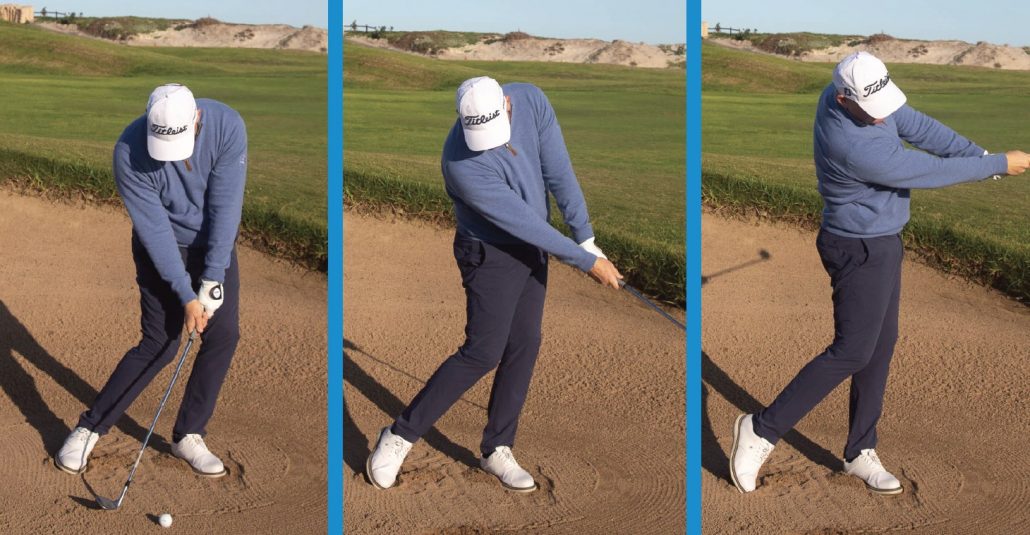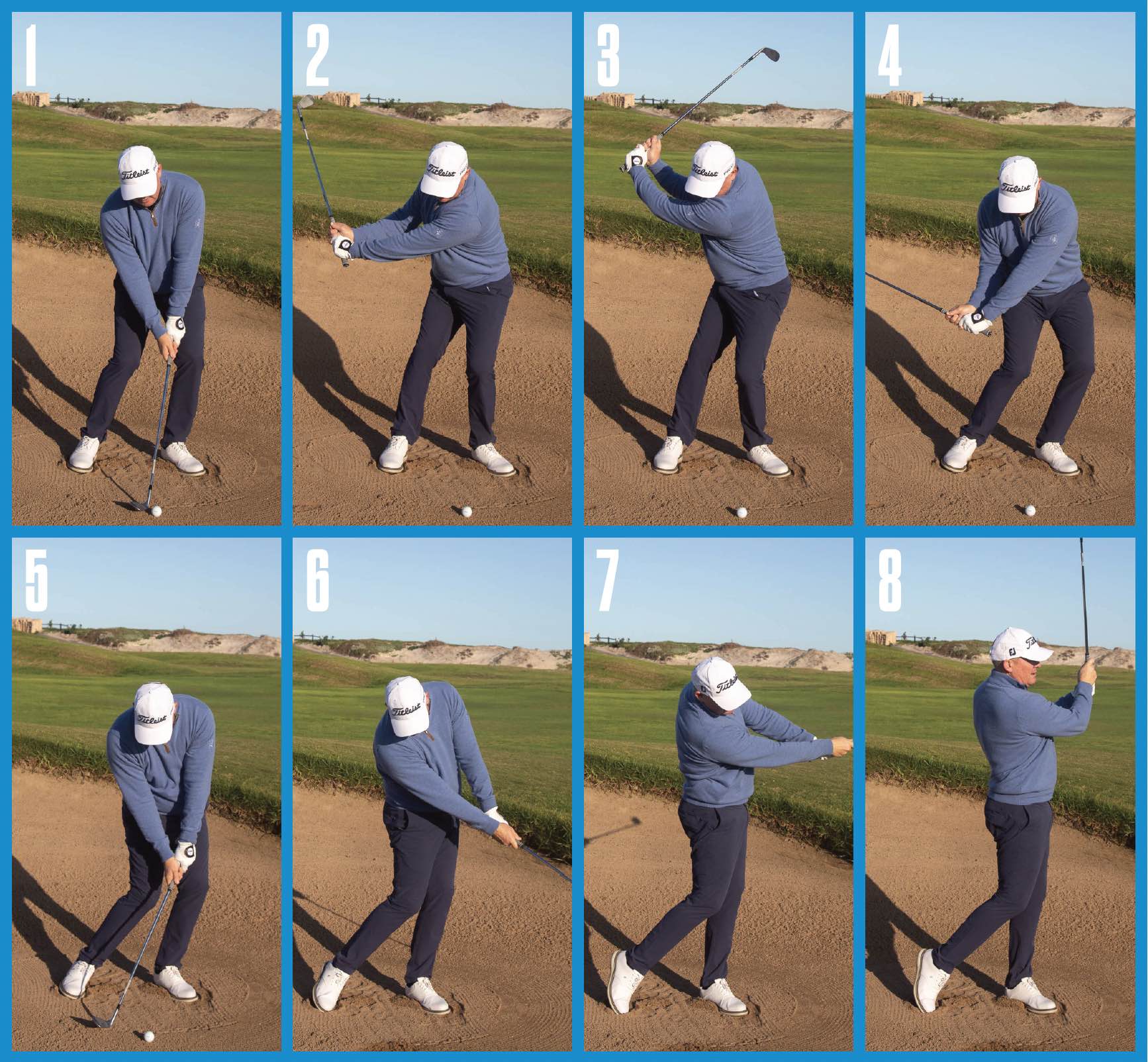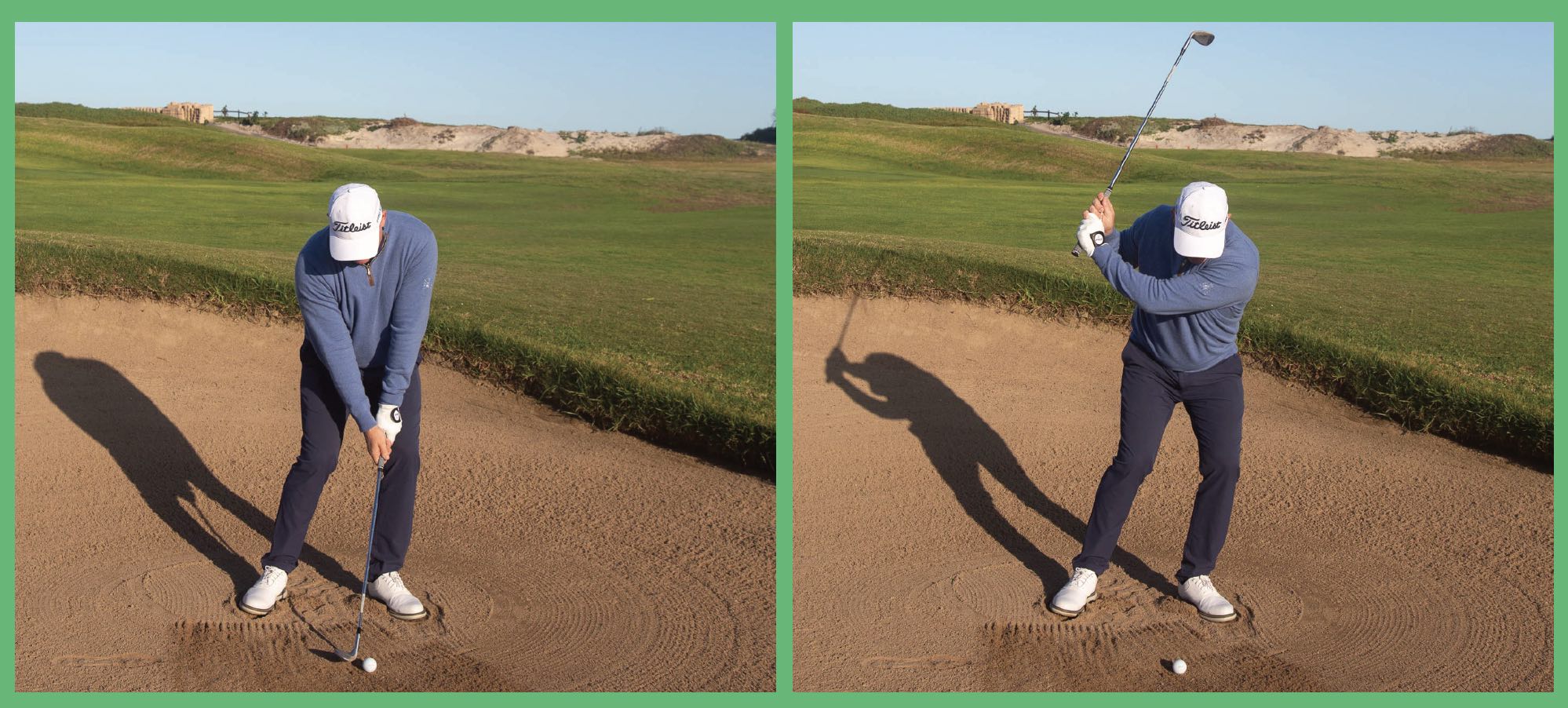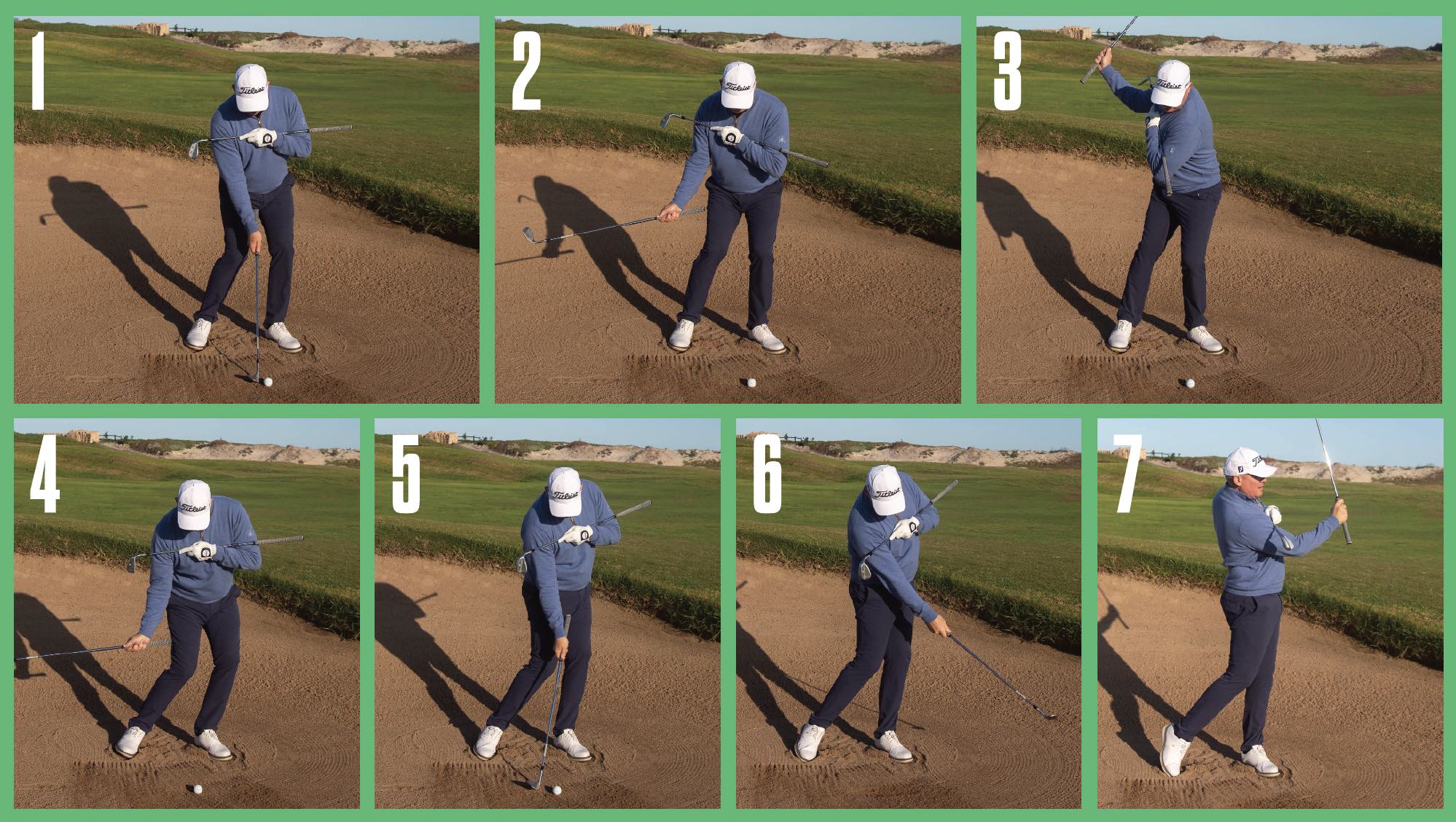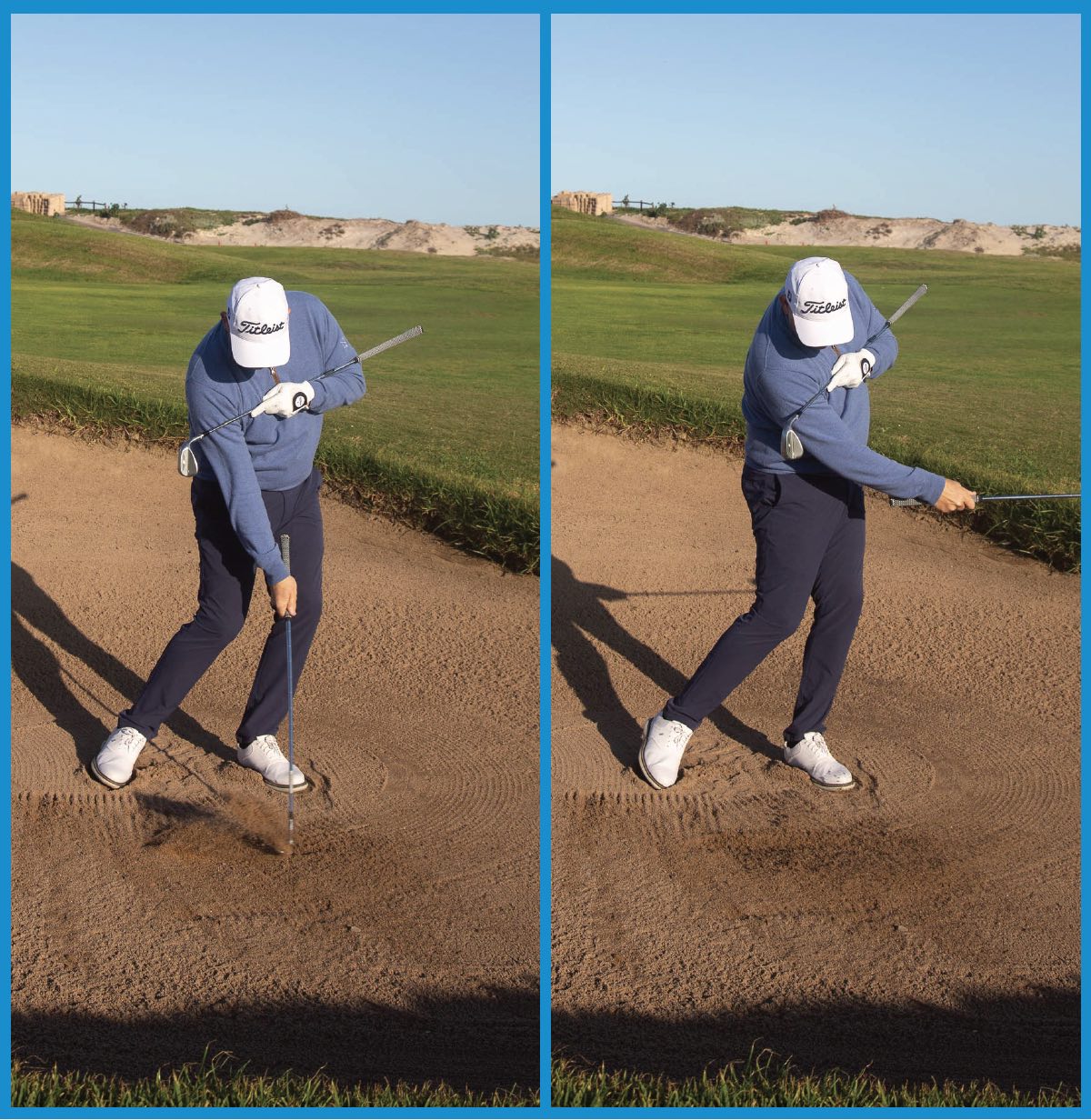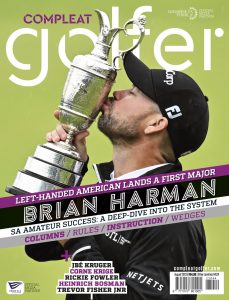In this Compleat Golfer series, GRANT HEPBURN highlights some of the most effective golfing drills ever devised.
For the top professionals, an errant shot that lands up in the bunker is something of a relief compared to when it finishes in thick rough. That’s because the pros are able to control shots out of the sand much easier than out of juicy rough.
When it comes to the majority of amateurs, however, bunkers are a great source of frustration and misery – whether they are fairway or greenside traps.
I find that many amateurs become overwhelmed by the greenside bunker shot, which is about the only shot in golf where you don’t actually hit the ball. Instead you hit the sand behind and under the ball, causing it to pop out onto the green.
Even though a greenside bunker shot is a relatively short shot, it’s still important to turn your body as your arms swing on the way back and again on the way through. I’ll demonstrate what I mean.
Getting it right
In this good sequence, I set up with my weight favouring my left side. This is to ensure that I don’t catch too much sand behind the ball in my downswing. I want to catch just a handful of sand and not a bucket of sand and keeping my weight on my left side throughout the backswing is important to achieve this.
In my backswing, note how my shoulders and hips turn, even though my weight remains on my left side and my lower body remains quiet and stable. This turning of the body as the arms swing ensures that I generate enough speed and also the correct angle of attack so that I can clip the sand behind the ball as I hit the shot.
I also make sure that my followthrough combines a swing of the arms with a turn of my body. Note how my hips and shoulders face the target as I swing through, allowing my body to assist as the club pops the ball up.
Getting it wrong
I see so many ammies getting the basics of the bunker shot wrong. In this example you can see how I have only used my arms in the backswing and the body has remained still.
The result is a very steep and weak backswing, which will most likely result in me chopping downwards and taking too much sand as I hit the shot.
Inevitably it makes it difficult to have any kind of consistency or control.
The drill
A good drill to practise the feeling of the body turning and the arms swinging is to hit shots with only one hand – the right hand for right-handed players.
Use your left hand to hold a golf club across your chest. Now hit a few one-handed shots, ensuring that you are aware of your shoulders turning as you keep the club pressed against your chest.
Don’t be too worried about hitting good shots; the idea is to get a feel of how the body and shoulders turn on the way back and also on the way through as you complete the swing.
You can see how the club across my chest moves the whole time in my backswing and followthrough – this indicates that I have used my body correctly, giving me the best chance of hitting a good bunker shot.
Watch out for
In these photos, you can see what happens when I only pick up my arm and don’t turn my shoulders. Note how the shaft remains in a similar position to what it was at address – indicating no movement of my body.
– This article first appeared in the August 2023 issue of Compleat Golfer magazine.


